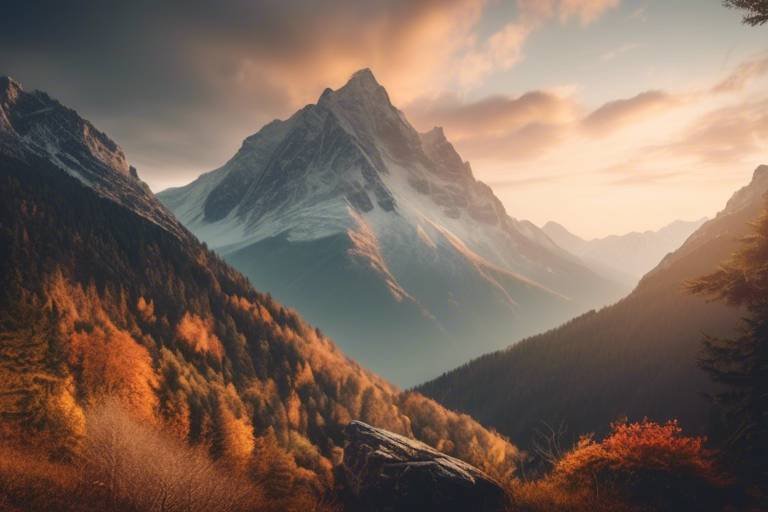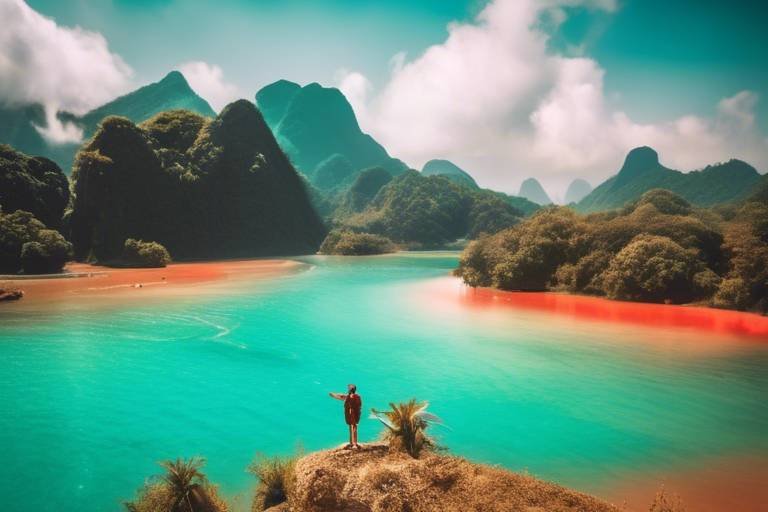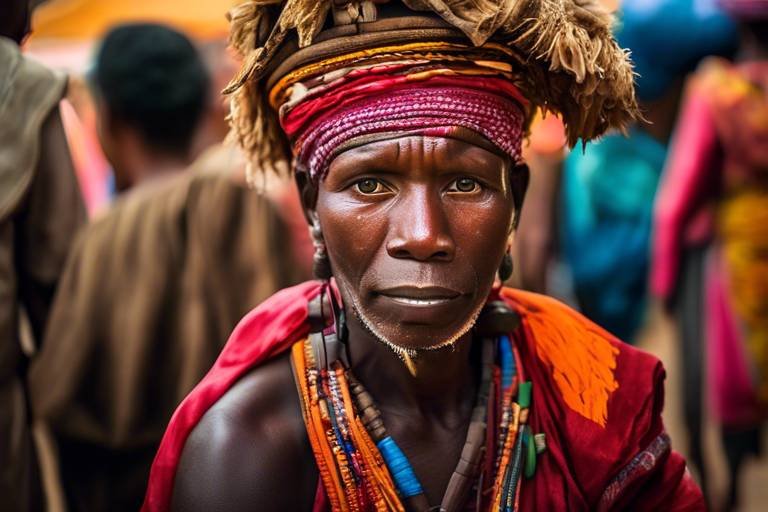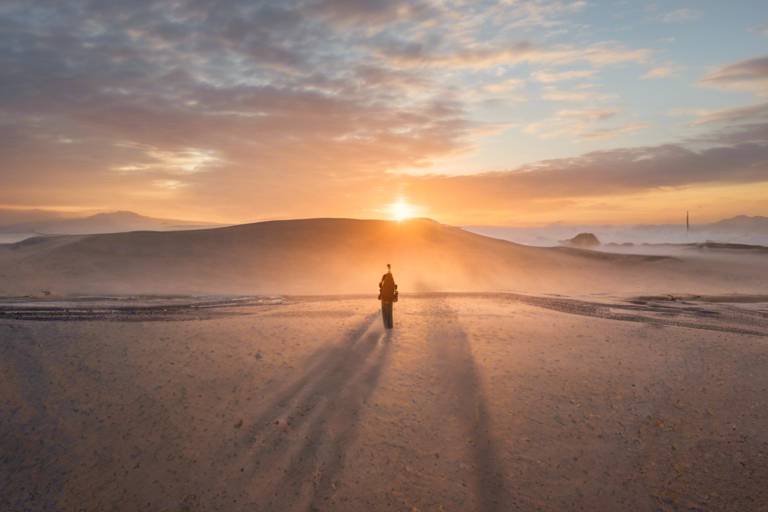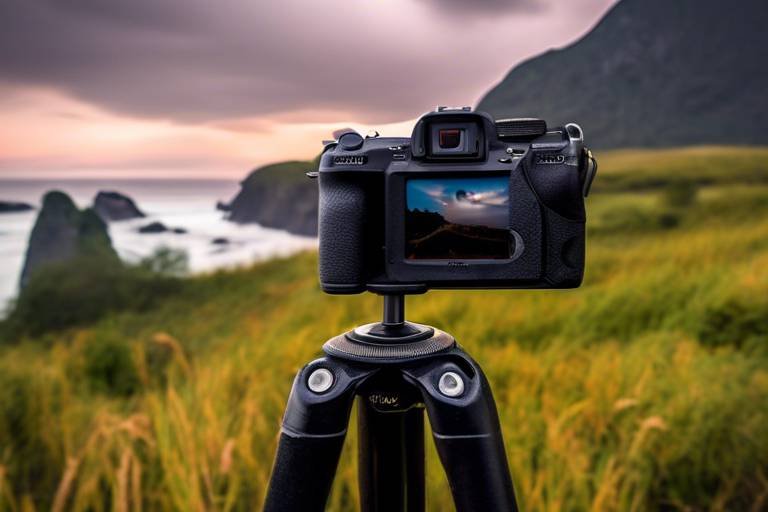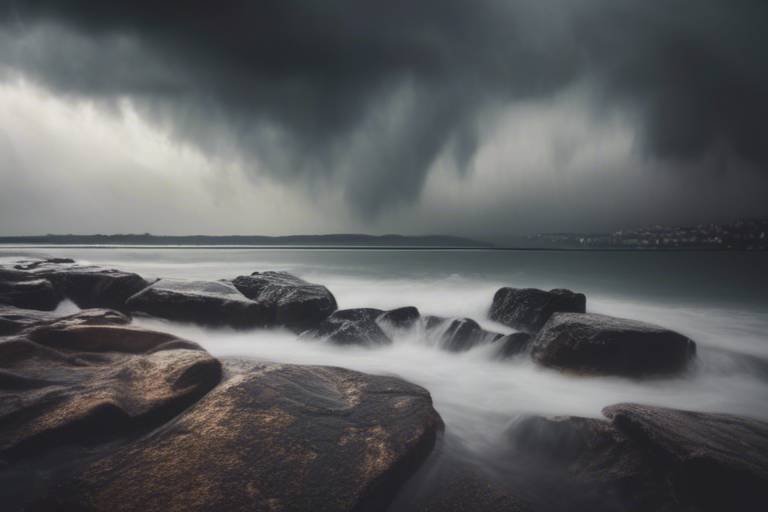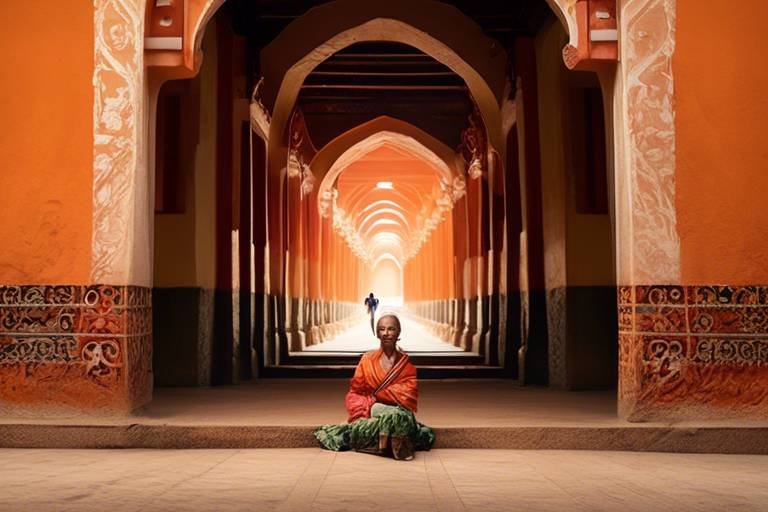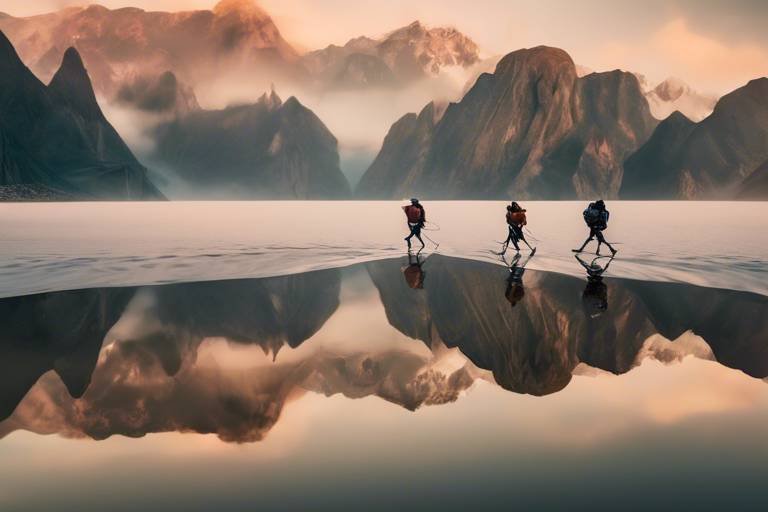How to Take Beautiful Photos of Scenic Mountain Views
When it comes to capturing the breathtaking beauty of scenic mountain views through photography, there are several key tips and techniques to keep in mind. From understanding the impact of light and weather conditions to choosing the right camera gear and mastering composition, each aspect plays a crucial role in creating stunning mountain landscape images that truly stand out.
One of the fundamental elements to consider when photographing mountain landscapes is the light and weather conditions. The interplay of light and shadows on the rugged terrain can dramatically enhance the mood and atmosphere of your photos. By observing how the changing weather affects the scene, you can adapt your shooting style to capture unique moments that evoke a sense of awe and wonder.
When it comes to choosing the right camera gear for mountain photography, quality equipment can make a significant difference in the clarity and precision of your images. Investing in a sturdy tripod, wide-angle lenses, and filters can help you capture the grandeur of the mountains with sharpness and detail, ensuring that every shot is a masterpiece in its own right.
Mastering composition and framing techniques is essential for creating visually appealing mountain photographs that tell a compelling story. By following the rule of thirds, experimenting with different perspectives, and paying attention to details such as leading lines and symmetry, you can elevate your mountain images from ordinary snapshots to extraordinary works of art.
Adding leading lines and foreground elements to your mountain landscape photos can bring depth and perspective to your compositions, drawing the viewer's eye into the scene and creating a sense of immersion. Whether it's a winding trail leading towards the peaks or a cluster of wildflowers in the foreground, these elements can add visual interest and context to your images.
Capturing the magical moments of sunrise and sunset in mountain photography is a must for creating truly breathtaking images. The warm golden light during these times of day can transform the mountains into a glowing spectacle, casting long shadows and creating a sense of drama and beauty that is unparalleled. By planning your shots around these golden hours, you can capture the mountains in their most enchanting light.
After capturing your mountain images, the editing and post-processing stage is where you can truly bring out the full beauty and detail of the scenery. Using editing software to adjust colors, contrast, and sharpness can enhance the mood and atmosphere of your photos, creating a final result that is both stunning and true to the natural beauty of the mountains.
Exploring different angles and perspectives is key to capturing unique and creative mountain views that stand out from the rest. By climbing higher, crouching lower, or experimenting with unconventional angles, you can discover new ways to showcase the grandeur and majesty of the mountains, creating images that are both captivating and original.
Lastly, when photographing mountain landscapes, it is crucial to preserve their natural beauty and environment responsibly. Respecting nature, following ethical guidelines, and leaving no trace are essential practices to ensure that future generations can also enjoy the pristine charm of these majestic landscapes.
By following these tips and techniques, you can elevate your mountain photography skills and capture stunning images that truly do justice to the scenic beauty of mountain views.
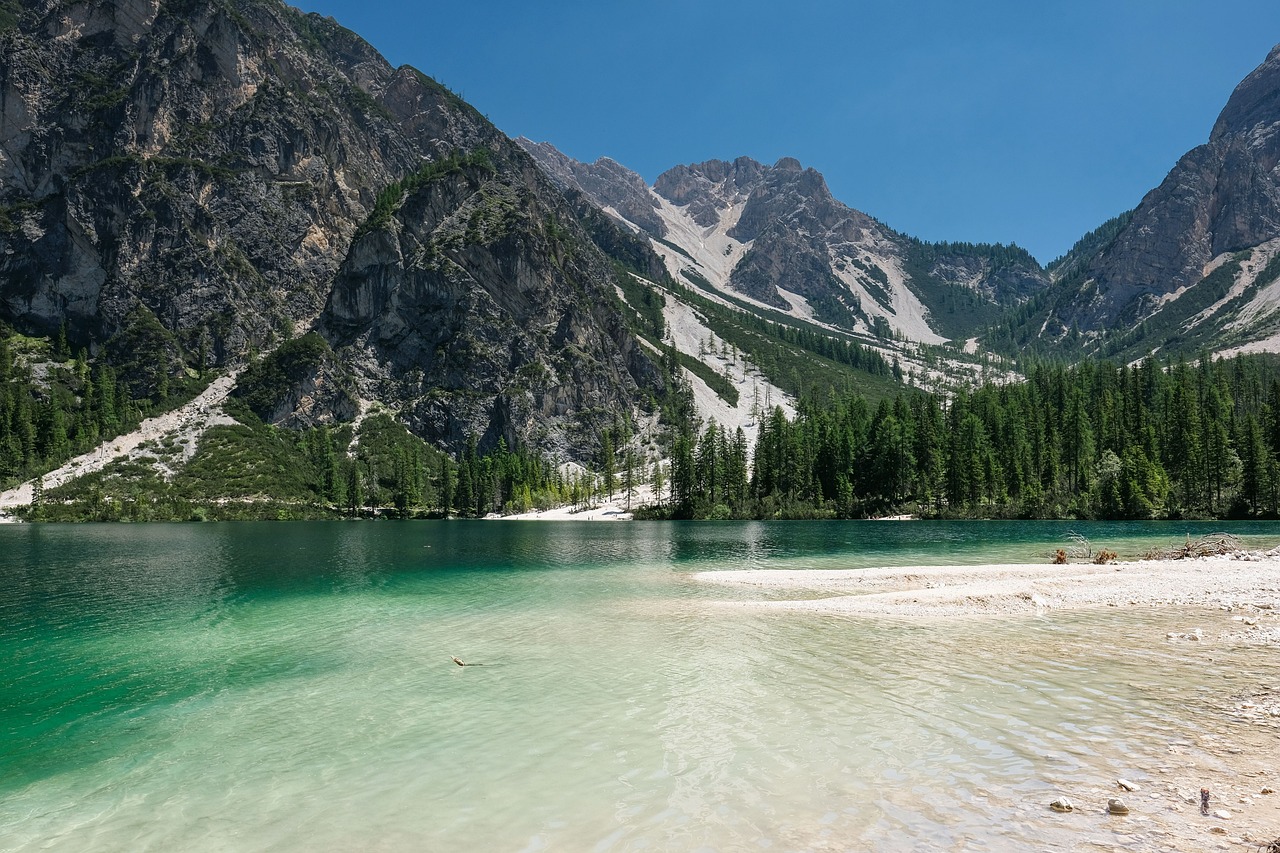
Understanding the Light and Weather Conditions
Tips and techniques for capturing stunning images of mountain landscapes through photography.
When it comes to photographing mountain scenery, understanding the impact of light and weather conditions is crucial. The interplay of light and shadow can dramatically transform the appearance of mountains, creating dynamic and captivating images. Whether it's the soft glow of sunrise casting a warm hue over the peaks or the dramatic shadows of a stormy sky, the weather can be a powerful ally in your quest for the perfect shot.
By observing the light patterns throughout the day and keeping an eye on the weather forecast, you can anticipate the best moments to capture the mountains in their most enchanting light. Cloud cover, fog, rain, and snow can all add a sense of drama and mystery to your photos, elevating them from ordinary snapshots to works of art.
Additionally, knowing how to adjust your camera settings to accommodate different lighting conditions can make a significant difference in the quality of your mountain photographs. From adjusting the exposure to playing with white balance, mastering the technical aspects of photography in varying light situations will help you achieve professional-looking results.
Selecting the essential camera equipment, lenses, and accessories for capturing mountain scenery with precision and clarity.
Mastering composition rules and framing techniques to create visually appealing mountain photographs that tell a compelling story.
Incorporating leading lines and foreground elements to add depth and perspective to your mountain landscape images.
Tips for capturing the magical golden hours of sunrise and sunset in mountain photography for breathtaking results.
Guidance on enhancing mountain photos through editing software to bring out the full beauty and detail of the scenery.
Experimenting with various angles and perspectives to capture unique and creative mountain views that stand out.
Ethical considerations and practices for photographing mountain environments responsibly while preserving their natural charm.

Choosing the Right Camera Gear
Tips and techniques for capturing stunning images of mountain landscapes through photography.
When it comes to capturing the beauty of scenic mountain views through photography, selecting the right camera gear is essential. The choice of camera equipment, lenses, and accessories can significantly impact the quality and clarity of your mountain landscape images. To ensure you are well-equipped for the task, consider the following factors:
Camera Body: A camera body with high resolution and dynamic range is ideal for capturing the intricate details and vibrant colors of mountain scenery. Look for a camera that offers manual settings for full control over your shots.
Lenses: Invest in quality lenses that are suitable for landscape photography. Wide-angle lenses are particularly useful for capturing the vast expanse of mountains and the surrounding environment. Additionally, consider carrying a telephoto lens to capture distant details or compress the perspective of mountain ranges.
Tripod: Stability is crucial when shooting mountain landscapes, especially in low light conditions or when using slow shutter speeds. A sturdy tripod will help you achieve sharp and steady images, allowing you to experiment with long exposures or panoramic shots.
Filters: Filters can enhance your mountain photographs by controlling light, reducing glare, or adding creative effects. Consider using a polarizing filter to deepen the colors of the sky and foliage, or a graduated neutral density filter to balance exposure between the bright sky and dark mountains.
By carefully selecting the right camera gear tailored to mountain photography, you can elevate your images and capture the beauty of scenic mountain views with precision and clarity.
Have more questions about photographing mountain landscapes? Check out some common queries below:
- Q: How can I protect my camera gear in challenging mountain environments?
- A: Consider investing in weather-sealed equipment and protective cases to shield your gear from harsh conditions like rain, snow, and dust.
- Q: What settings should I use for mountain photography?
- A: Experiment with different aperture settings to control depth of field and shutter speeds to capture motion or stillness in your mountain images.
- Q: How can I ensure my mountain photos stand out from the rest?
- A: Try exploring unique angles, perspectives, and compositions to create distinctive and memorable mountain photographs that showcase your creative vision.

Composition and Framing Techniques
Tips and techniques for capturing stunning images of mountain landscapes through photography
When it comes to capturing the beauty of mountain landscapes, composition and framing play a crucial role in creating visually appealing photographs that tell a compelling story. Imagine your camera as a painter's canvas, and the mountains as your subject waiting to be brought to life through your lens.
One essential technique in composition is the rule of thirds, where you divide your frame into a grid of nine equal parts and place key elements along these lines or at their intersections to create balance and interest in your photos. This technique can guide the viewer's eyes through the image, leading them to the majestic mountain peaks or the winding trails below.
Additionally, framing your mountain shots with natural elements such as trees, rocks, or even man-made structures can add depth and context to your photographs. Think of these elements as a window through which your audience can immerse themselves in the grandeur of the mountains, creating a sense of scale and perspective.
Experimenting with different angles and perspectives can also enhance the composition of your mountain photos. Whether you choose to shoot from a high vantage point to capture the vastness of the landscape or get down low to emphasize the details in the foreground, each angle offers a unique view that can elevate your photography to new heights.
Remember, composition and framing are not just technical aspects of photography; they are tools that allow you to express your creativity and vision. So, the next time you find yourself amidst the breathtaking beauty of mountain scenery, take a moment to consider how you can frame the scene in a way that not only captures its splendor but also evokes emotion and wonder in those who view your photos.
Q: How can I best capture the changing light conditions in mountain photography?
A: To capture the dynamic light in mountain landscapes, adjust your camera settings accordingly and be prepared to adapt as the natural light shifts. Experiment with different exposure settings and consider using filters to control the light entering your lens.
Q: What are some ethical considerations when photographing mountain environments?
A: When photographing mountain landscapes, respect the natural environment by staying on designated paths, avoiding trampling vegetation, and refraining from disturbing wildlife. Leave no trace of your presence and strive to preserve the pristine beauty of these majestic locations for future generations to enjoy.

Utilizing Leading Lines and Foreground Elements
Tips and techniques for capturing stunning images of mountain landscapes through photography.
When it comes to capturing captivating mountain landscape images, utilizing leading lines and foreground elements can significantly enhance the visual impact of your photos. Leading lines are elements within the scene that guide the viewer's eye towards the main subject, creating a sense of depth and drawing attention to key focal points.
Foreground elements, on the other hand, add interest and context to the image, providing a sense of scale and dimension to the vast mountain scenery. By incorporating these elements effectively, you can create dynamic compositions that engage the viewer and convey a sense of immersion in the natural beauty of the mountains.
Imagine a winding trail leading the viewer's gaze towards a majestic mountain peak in the distance, or a cluster of vibrant wildflowers in the foreground framing the expansive mountain range behind them. These elements not only add visual interest but also help to create a narrative within the frame, inviting viewers to explore the scene further.
Experiment with different compositions and perspectives to find unique ways to incorporate leading lines and foreground elements in your mountain landscape photos. By carefully selecting and positioning these elements within your frame, you can create images that not only showcase the grandeur of the mountains but also evoke a sense of wonder and awe in the viewer.
1. How can I ensure my mountain photos are unique and stand out from the rest?
2. What are the best times of day to capture stunning mountain landscape images?
3. Are there any specific editing techniques to enhance the beauty of mountain scenery in post-processing?
4. How can I respect the natural environment while photographing mountain landscapes?
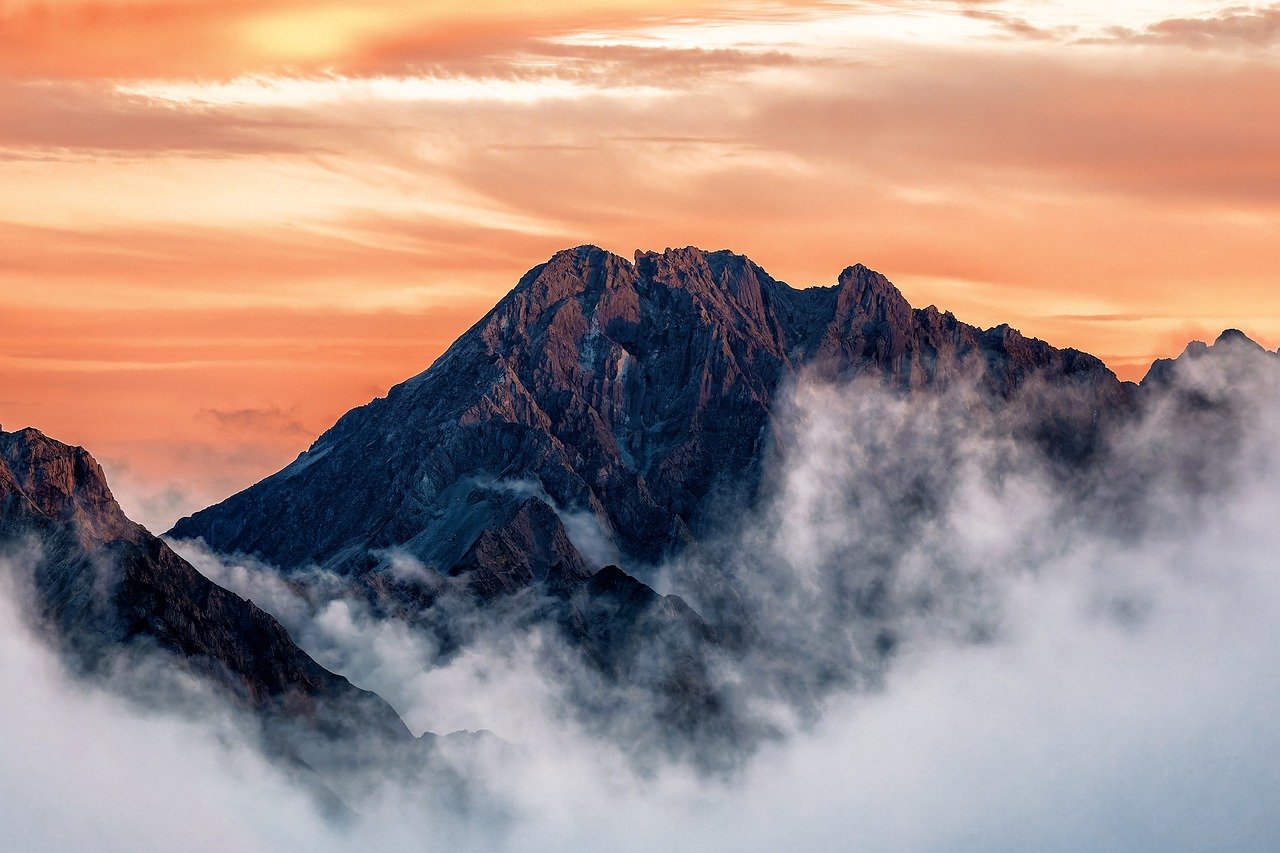
Capturing Sunrise and Sunset Moments
Tips and techniques for capturing stunning images of mountain landscapes through photography
Witnessing the magical moments of sunrise and sunset in the mountains is a photographer's dream come true. The soft, golden light casts a warm glow over the rugged peaks, creating a breathtaking scene that is both serene and awe-inspiring.
To capture these fleeting moments effectively, it's essential to plan ahead and arrive at your chosen location well before the sun begins to rise or set. This allows you to scout out the best vantage points and set up your equipment to make the most of the golden hour.
During sunrise and sunset, the sky often transforms into a canvas of vibrant colors, ranging from soft pastels to fiery oranges and reds. To enhance the beauty of your mountain photos during these times, consider using a tripod to keep your camera steady and a polarizing filter to deepen the colors and reduce glare.
Experiment with different compositions, such as capturing the sun as it peeks over the horizon or silhouetting the mountains against the colorful sky. Including elements like trees, lakes, or rocks in the foreground can add depth and interest to your sunrise and sunset shots, creating a captivating visual story.
Editing plays a crucial role in bringing out the full potential of your sunrise and sunset mountain images. Adjusting the exposure, contrast, and color balance can help enhance the mood and atmosphere captured during these magical moments, ensuring your photos truly shine.
Remember, capturing sunrise and sunset moments in the mountains is not just about taking a picture; it's about immortalizing a fleeting yet unforgettable experience in a single frame. Embrace the beauty of nature's daily spectacle and let your creativity soar as you capture the essence of these mesmerizing moments.
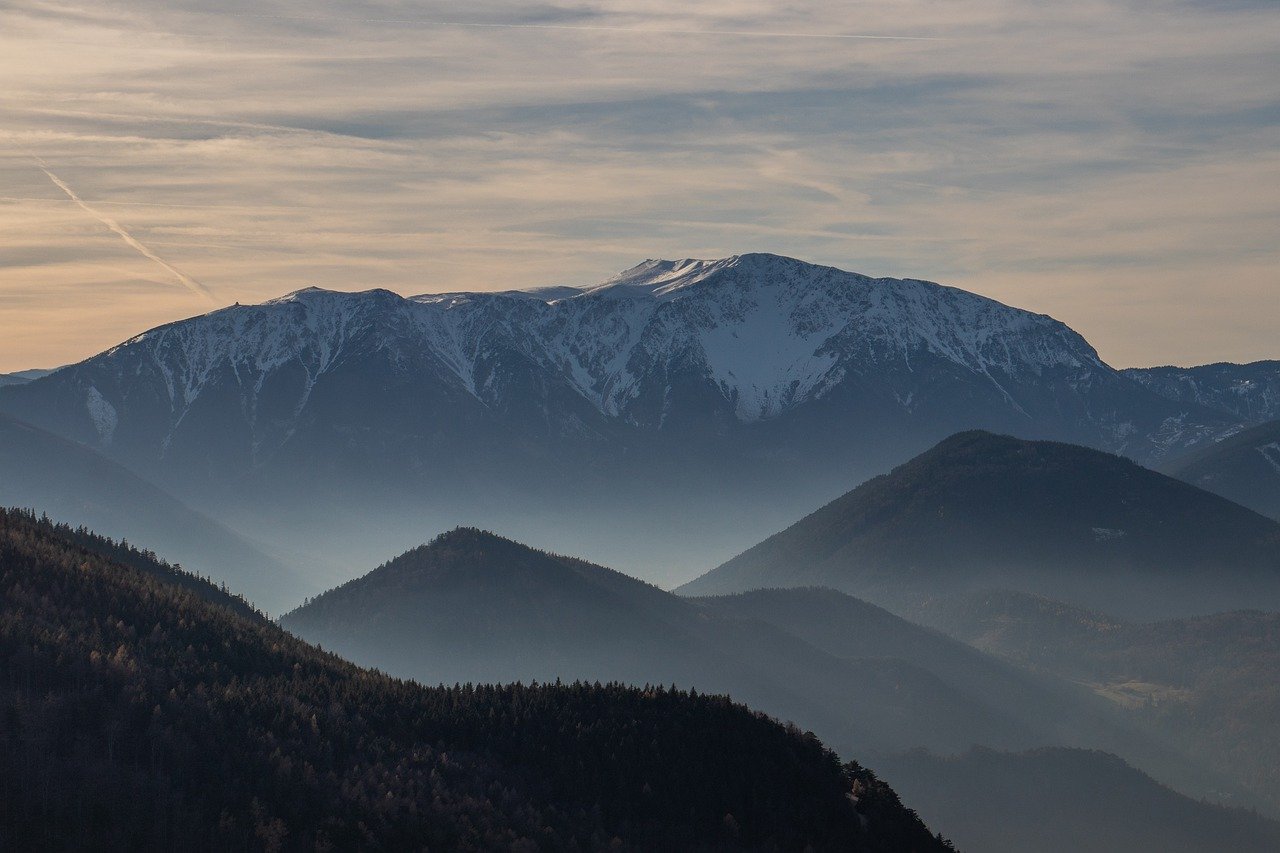
Editing and Post-Processing Mountain Images
Tips and techniques for capturing stunning images of mountain landscapes through photography.
When it comes to editing and post-processing mountain images, it's essential to enhance the beauty and details of the scenery while maintaining a natural look. Utilizing editing software effectively can elevate your mountain photographs to a whole new level of visual appeal.
One key aspect of post-processing mountain images is adjusting the exposure to balance the light and shadows, especially in landscapes where lighting conditions can vary dramatically. By fine-tuning the exposure, you can bring out the intricate details of the mountains and the surrounding environment.
Additionally, color correction plays a vital role in enhancing the vibrancy and mood of mountain photos. Adjusting the color temperature, saturation, and contrast can help create a more captivating and immersive visual experience for the viewer.
Furthermore, sharpening and clarity adjustments can enhance the sharpness and definition of mountain landscapes, making distant peaks and intricate textures stand out with greater clarity and impact.
When editing mountain images, it's crucial to maintain a balance between enhancing the natural beauty of the scenery and avoiding over-editing that can result in an unrealistic or artificial look. Strive to preserve the authenticity and essence of the mountains while enhancing their visual appeal through thoughtful post-processing techniques.
Experimenting with different editing styles and effects can also add a creative touch to your mountain photographs, allowing you to express your unique vision and artistic interpretation of the stunning landscapes you capture through your lens.
Remember, the goal of editing and post-processing mountain images is not to alter reality but to showcase the beauty and grandeur of these natural wonders in a way that resonates with viewers and evokes a sense of awe and appreciation for the majestic mountain scenery.
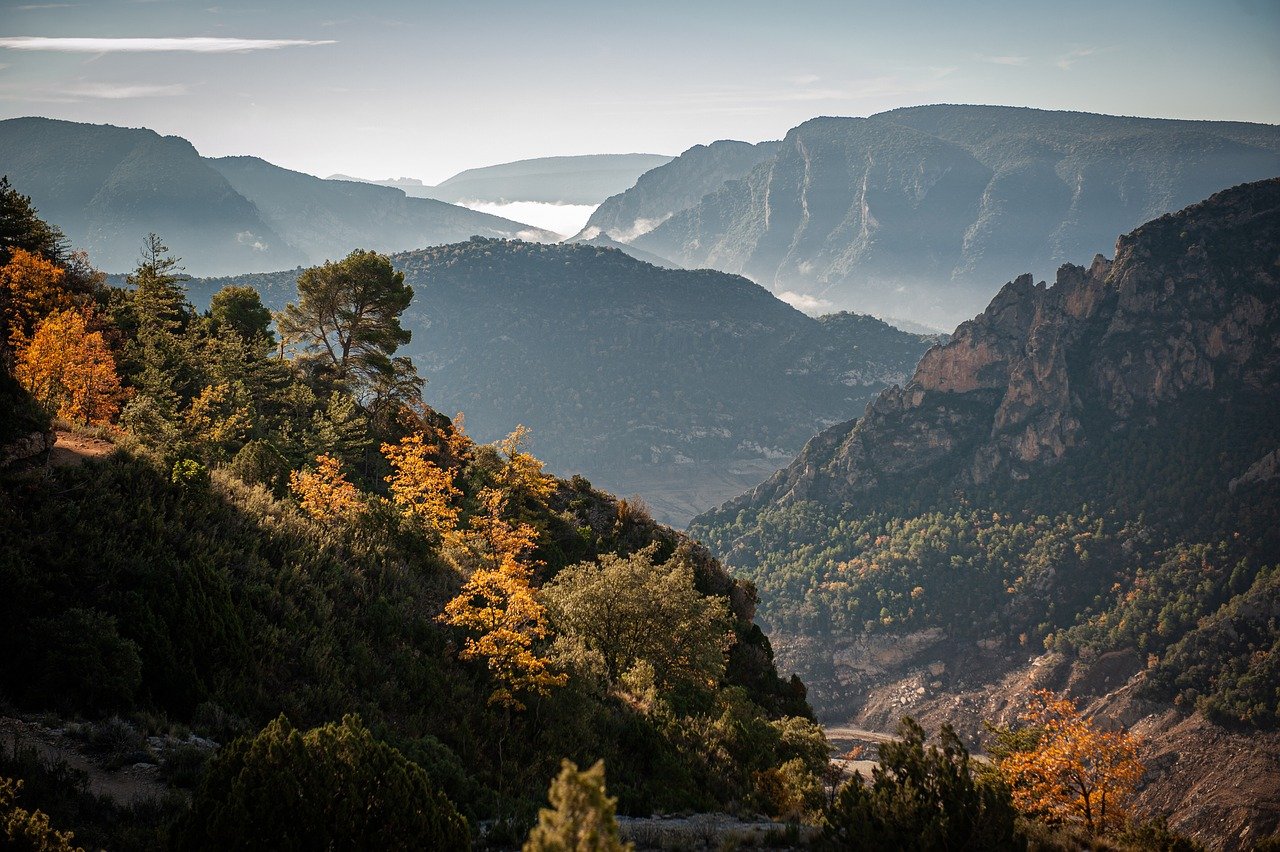
Exploring Different Angles and Perspectives
Tips and techniques for capturing stunning images of mountain landscapes through photography.
When it comes to photographing mountain landscapes, exploring different angles and perspectives can truly elevate your images to new heights. Imagine standing at the base of a majestic mountain, looking up towards its peak. Now, consider how the scene changes when you crouch down low to capture the intricate details of wildflowers at your feet, or when you position yourself on a nearby hill to frame the mountain against the vast expanse of the sky.
By experimenting with various angles and perspectives, you can discover unique vantage points that offer fresh and captivating views of the mountains. Whether it's shooting from a bird's eye view using a drone, or getting up close and personal with a wide-angle lens, each perspective adds a different dimension to your mountain photographs.
Think of angles and perspectives as your artistic tools, allowing you to play with depth, scale, and visual interest in your mountain images. Embrace the challenge of finding unconventional viewpoints that showcase the grandeur and beauty of the mountains in ways that surprise and delight the viewer.
Q: How can I ensure my mountain photos stand out from the rest?
A: To make your mountain photos stand out, focus on finding unique angles and perspectives that offer a fresh take on familiar landscapes. Experiment with different shooting positions, heights, and compositions to create visually striking images.
Q: What camera settings work best for capturing mountain scenery?
A: When shooting mountain landscapes, consider using a smaller aperture for greater depth of field, a lower ISO to reduce noise, and a slower shutter speed to capture movement in clouds or water. Adjust your settings based on the available light and desired effects.
Q: How can I edit mountain photos to enhance their beauty?
A: When editing mountain images, focus on enhancing the natural colors and details of the scenery. Adjust the exposure, contrast, and saturation levels to bring out the richness of the landscape while maintaining a realistic look. Experiment with cropping and sharpening to refine your compositions.
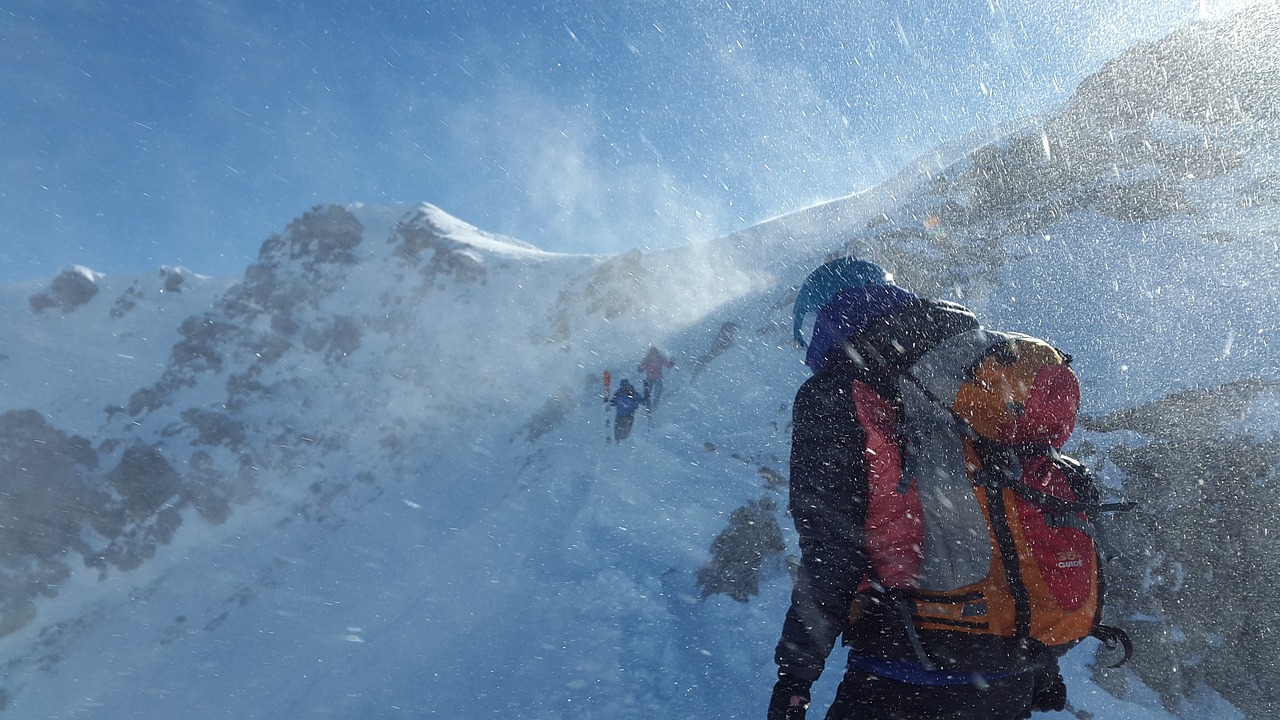
Preserving the Natural Beauty of Mountain Landscapes
Preserving the natural beauty of mountain landscapes is not just about capturing stunning photographs but also about respecting and safeguarding these precious environments for future generations to enjoy. As photographers, we have a responsibility to minimize our impact on these delicate ecosystems while still being able to capture their magnificence through our lenses.
One crucial aspect of preserving the natural beauty of mountain landscapes is to practice Leave No Trace principles. This means leaving minimal or no impact on the environment while photographing. Avoid trampling on vegetation, disturbing wildlife, or leaving behind any litter. By following these principles, we can ensure that the landscapes remain pristine and untouched.
Another important consideration is to stay on designated trails and paths to prevent erosion and damage to the fragile mountain terrain. By sticking to established routes, we can minimize our footprint and protect the natural vegetation and wildlife habitats that make these landscapes so special.
When photographing mountain landscapes, it's essential to respect wildlife and maintain a safe distance to avoid causing stress or harm to animals. Remember that we are visitors in their home, and it's crucial to observe from a distance without disturbing their natural behaviors.
Furthermore, be mindful of the local regulations and guidelines when photographing in mountain areas. Some locations may have specific rules in place to protect the environment, such as restricted access during certain times of the year or limitations on drone use. By following these regulations, we can ensure that we are contributing to the conservation efforts in these areas.
Lastly, consider the long-term impact of your photography on the mountain landscapes. Think about how your images may influence others and the importance of promoting responsible outdoor practices. By raising awareness through your photographs and advocating for the preservation of these environments, you can play a vital role in protecting the natural beauty of mountain landscapes for generations to come.
Frequently Asked Questions
- What camera gear is essential for capturing mountain landscapes?
When photographing scenic mountain views, it is crucial to have a sturdy DSLR or mirrorless camera with a wide-angle lens to capture the vastness of the landscape. Additionally, a tripod is essential for stability, especially in low light conditions during sunrise or sunset.
- How can I make my mountain photos stand out?
To make your mountain photos stand out, focus on unique compositions, such as using leading lines to draw the viewer's eye into the scene or incorporating foreground elements to add depth. Experiment with different angles and perspectives to showcase the grandeur of the mountains.
- What editing techniques can enhance mountain images?
Editing software can help enhance the beauty of mountain landscapes by adjusting exposure, contrast, and colors to bring out the details in the scenery. It is important to maintain a natural look while enhancing the overall impact of the image.
- How can I photograph mountain landscapes responsibly?
When photographing mountain environments, it is essential to respect nature and follow ethical practices. Avoid trampling on delicate vegetation, stay on designated trails, and leave no trace of your visit to preserve the natural beauty of the landscape for future generations.

